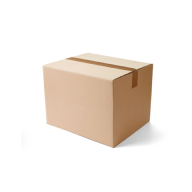HyFlex 11-800
4.7 / 5
Product description
Description
Everyday usability: HyFlex® 11-800 industrial gloves’ nitrile foam coating makes them exceptionally breathable, for less irritable daily use
Elevated comfort: ZONZ™ Comfort Fit Technology optimized lining relieves tension, for PPE gloves with peerless comfort
Certified skin-friendliness: These HyFlex® gloves are also Dermatest®-certified for skin-friendliness
Guaranteed cleanliness: In addition, they benefit from a proprietary washing process that removes impurities
Enhanced grip: Beyond comfort, Hyflex® 11-800 industrial working gloves’ nitrile foam coating delivers better grip in both dry and slightly oily conditions
Improved durability: They also boast ANSI/EN-compliant abrasion resistance, for lasting wear
Recommended for
Picking, fastening components
Adjusting systems and screwing
Loading and unloading trucks and vehicles
Handling incoming goods
Product shipping, transport and delivery
Lock smith
Product Details
Antistatic : Yes
Length : 199 - 265 Mm/ 7.8 - 10.4 Inches
Available Sizes : 6, 7, 8, 9, 10, 11
Coating Color : Grey
Coating Material : Foam Nitrile
Construction : Knitted
Cuff Style : Knitwrist
Finishing : Palm Coated
Gauge : 15
Latex Free : Yes
Liner Color : White
Liner Material : Nylon
Silicone Free : Yes
Washing Temperature : 40 °C (104 °F)
About Coated Cut Protection Glove
Coated Cut Protection Gloves provide essential hand safety with cut-resistant materials and specialized coatings for enhanced grip. Ideal for construction, manufacturing, and handling sharp materials, these gloves offer both protection and dexterity for demanding work environments.
- Cut Resistant
- Electrical Protection
- Machine Washable
- Hand Protection
Standards and labels
Ansell delivery terms
Free delivery for all Ansell products
424,64 €
Price per 12 packages (144 pairs)
2,95 € / pair
Free delivery
A carton contains 12 packages (144 pairs)




